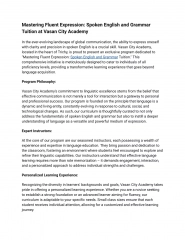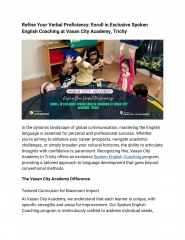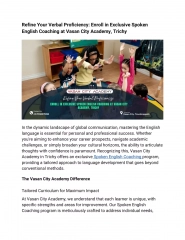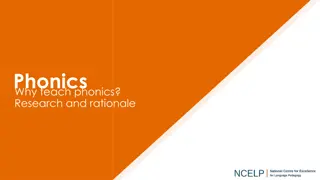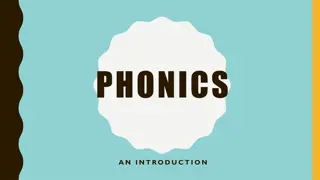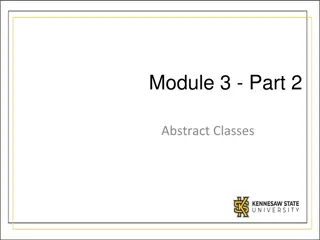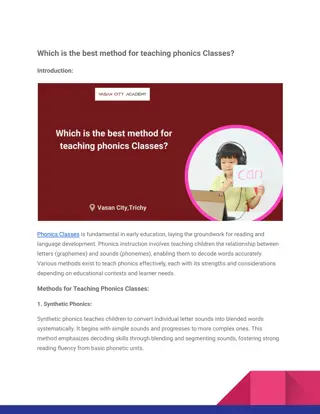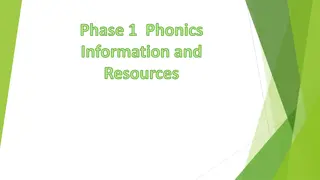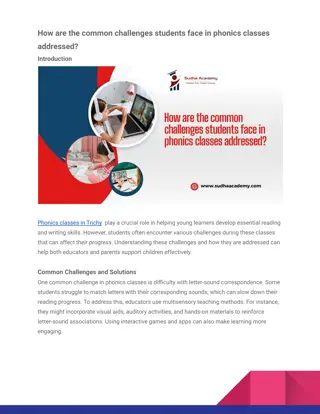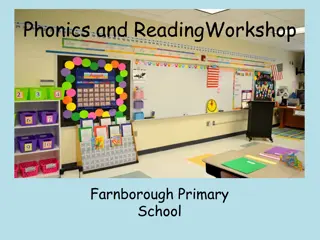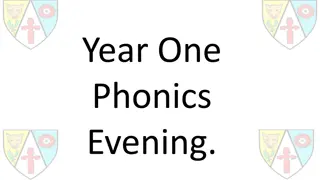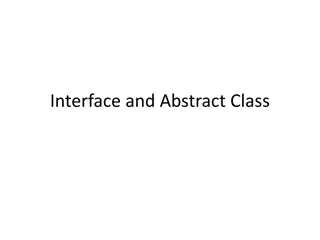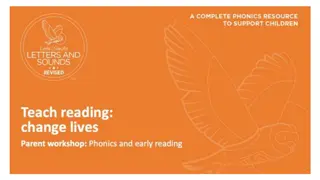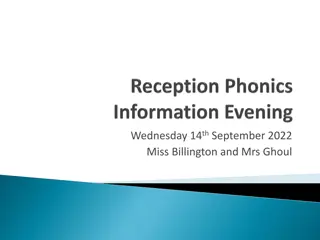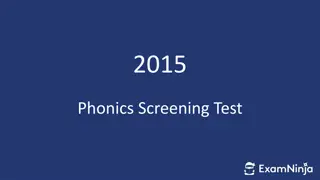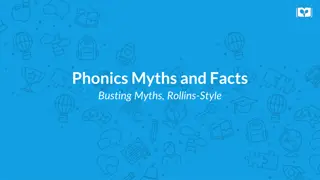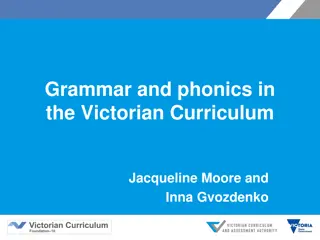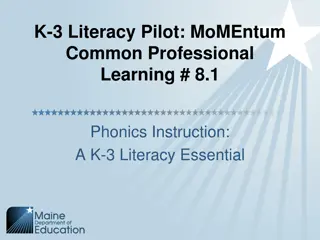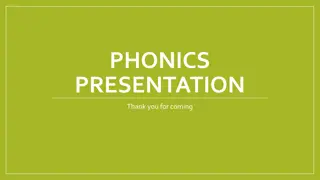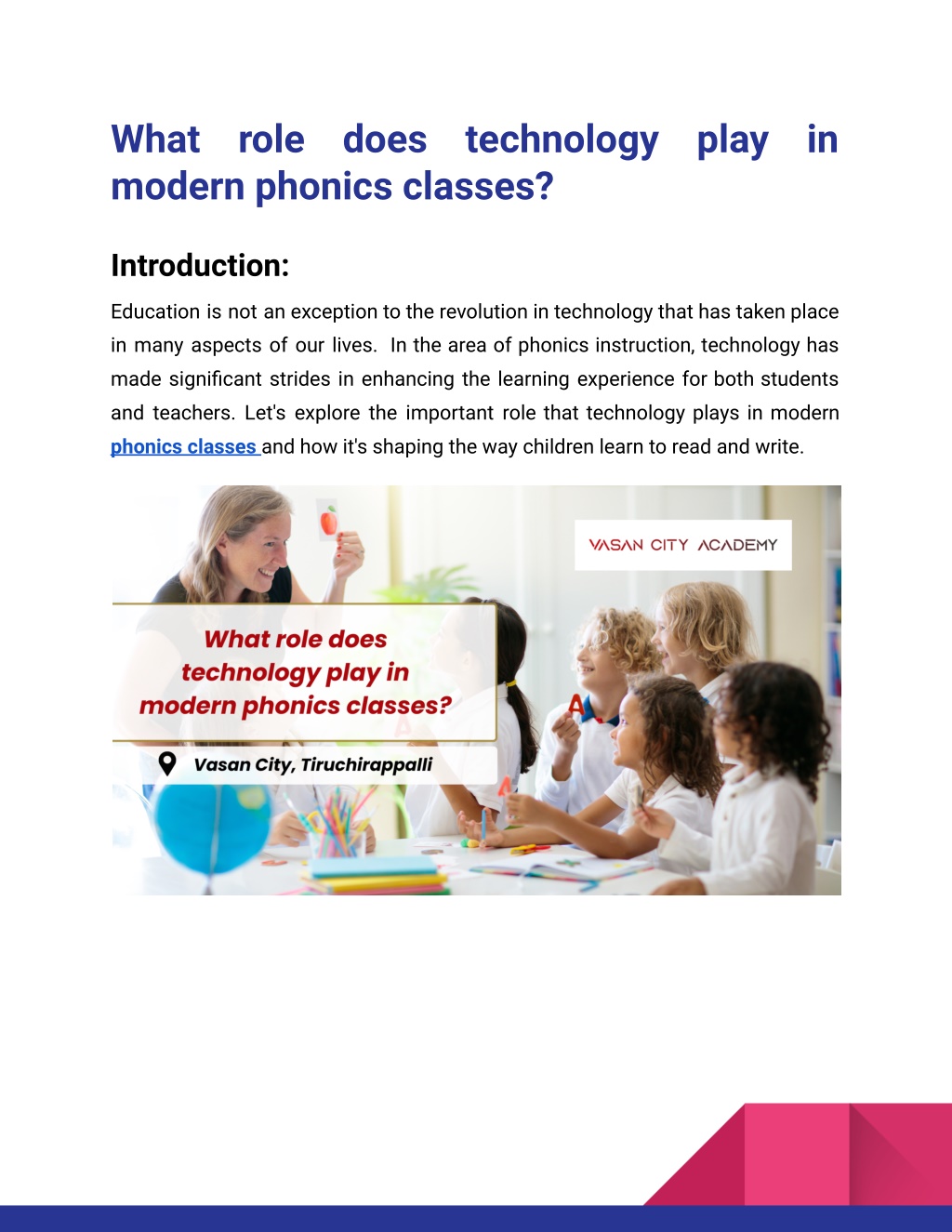
What role does technology play in modern phonics classes_Vasan City Academy
Technology has changed how kids learn to read and write. It offers new ways to engage students and personalize learning. From multi-sensory learning devices to interactive platforms, technology is now a crucial part of modern phonics classes. It will
Download Presentation

Please find below an Image/Link to download the presentation.
The content on the website is provided AS IS for your information and personal use only. It may not be sold, licensed, or shared on other websites without obtaining consent from the author. Download presentation by click this link. If you encounter any issues during the download, it is possible that the publisher has removed the file from their server.
E N D
Presentation Transcript
What modern phonics classes? role does technology play in Introduction: Education is not an exception to the revolution in technology that has taken place in many aspects of our lives. In the area of phonics instruction, technology has made significant strides in enhancing the learning experience for both students and teachers. Let's explore the important role that technology plays in modern phonics classes and how it's shaping the way children learn to read and write.
Interactive learning platforms One of the most significant contributions of technology to phonics classes is the introduction of interactive learning platforms. These digital tools provide engaging and immersive experiences that capture students' attention and make learning fun. Interactive whiteboards, tablets, and educational apps allow teachers to present phonics lessons in colourful, animated formats that bring letters and sounds to life. These platforms often include games and activities that reinforce phonics concepts, allowing students to practice their skills enjoyably. For instance, a student might drag and drop letters to form words or match sounds to corresponding images. This gamification of learning not only makes the process more entertaining but also helps in the retention and recall of phonics rules. Personalized learning experiences Technology enables personalized learning experiences tailored to each student's needs and progress. Adaptive learning software can assess a student's current phonics knowledge and automatically adjust the difficulty level of exercises. It ensures that each child is challenged appropriately, preventing boredom for advanced learners and frustration for those who need more practice. Teachers can use data analytics tools to track individual student progress, identify areas of difficulty, and provide targeted support. This level of personalization is much harder to achieve in traditional classroom settings. However, technology has made it a reality in modern phonics classes. Multi-sensory learning opportunities Phonics instruction benefits greatly from multi-sensory approaches, and technology provides numerous ways to engage multiple senses simultaneously. Audio recordings help students hear correct pronunciations, while visual
animations demonstrate proper mouth movements for producing different sounds. Touchscreen devices allow children to trace letter shapes, combining visual, auditory, and kinesthetic learning. Virtual reality (VR) and augmented reality (AR) technologies are also entering phonics classes. These immersive technologies can create 3D environments where students can interact with letters and words in a virtual space, providing a unique and memorable learning experience. Immediate feedback and assessment In traditional phonics classes, students often had to wait for teacher feedback on their work. Technology has dramatically reduced this waiting time by providing instant feedback on exercises and assessments. This immediate reinforcement helps students understand their mistakes quickly and make corrections in real-time. Automated assessment tools also save teachers valuable time, allowing them to focus more on instruction and individual student support. These tools can generate detailed reports on student performance, helping teachers identify trends and adjust their teaching strategies accordingly. Improved parent involvement Technology has bridged the gap between classroom learning and home practice. Many phonics apps and online platforms offer parent portals where guardians can monitor their child's progress and access resources to support learning at home. Its increased transparency and accessibility encourage greater parent involvement in their child's phonics education. Some apps even provide suggestions for phonics activities that parents can do with their children, extending learning beyond the classroom and reinforcing concepts in everyday life.
Accessibility for Diverse Learners Modern technology has made phonics instruction more accessible to diverse learners, including those with special needs. Artificial intelligence and translation technologies assist students with reading difficulties or visual impairments. Closed captioning and visual support benefit deaf or hard-of-hearing students in phonics classes. Additionally, translation features in educational software can support English language learners in connecting phonics concepts to their native language, facilitating a smoother learning process. Preparation for Digital Literacy As our world becomes increasingly digital, exposing students to technology in phonics classes prepares them for future digital literacy demands. By integrating technology into early reading instruction, educators are helping students develop essential skills for navigating digital texts and using digital tools for learning and communication. Challenges and considerations While technology offers numerous benefits to modern phonics classes, it's important to acknowledge potential challenges. Issues such as screen time management, ensuring equal access to technology for all students, and maintaining a balance between digital and traditional learning methods need to be carefully considered. Teachers must also receive adequate training to integrate technology into their phonics instruction effectively. The most successful implementations of technology in phonics classes occur when educators are confident and competent in using the tools at their disposal.
Conclusion Technology has changed how kids learn to read and write. It offers new ways to engage students and personalize learning. From multi-sensory learning devices to interactive platforms, technology is now a crucial part of modern phonics classes. It will continue to play a big role in the future. Educators can create engaging phonics classes that prepare students for success in a digital world by using technology alongside traditional teaching methods. When used thoughtfully, technology can help build strong reading skills through phonics instruction. For more information, Call: +91 7010975193 Mail ID: vasancityacadamey@gmail.com location: https://maps.app.goo.gl/rvyh3WQDPJE6D95Q9


